introduction
This article refers to the address: http://
The wireless router is a network device based on the GPRS/CDMA1X public mobile network platform that wirelessly accesses the Internet or VPDN. It provides a mobile, low-cost TCP/IP-based data transmission channel.
Wireless routers can be widely used in finance, insurance, power, surveillance, transportation, meteorology, hydrological monitoring and other industries. With a stable GPRS/CDMA1X wireless network, wireless routers can replace some wired Ethernet routers, HUBs, and wired MODEMs to achieve wireless data transmission. Under the condition of public mobile network coverage, the original Ethernet interface, relying on various terminal devices of wired Ethernet communication system, such as PC, industrial computer, ATM machine, POS machine, network camera, etc., can be easily passed. The wireless router accesses the GPRS/CDMA1X network and uses the data service provided by the mobile Internet for data communication.
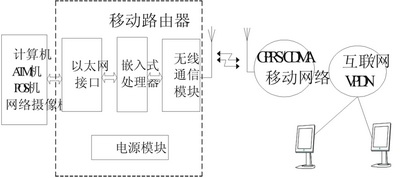
Figure 1 Schematic diagram of the working principle of the simulator
Compared to traditional wired network access, wireless router devices have the following advantages:
• Can be quickly provided with wireless TCP/IP services without being bound by cables.
· It has mobility and can be installed on mobile carriers such as ships, trains and cars.
· Flexible and variable, increase or decrease equipment as needed.
Wireless router hardware design
The wireless router consists of four parts: wireless communication module, Ethernet interface, embedded processor and memory, power module, etc. As shown in Figure 1, one end is connected to the GPRS/CDMA1X network through the antenna through the wireless communication module, and the other end is passed through the Ethernet. The network interface is connected to a network terminal device, such as a PC, a network camera, a multimedia terminal, etc., and the wireless router is equivalent to establishing a bridge between the network terminal device and the Internet. The wireless communication module partially completes the work of accessing the GPRS/CDMA1X network, which is equivalent to a mobile modem that can dial the Internet.
The wireless router connects to the GPRS or CDMA1X mobile internet through the wireless communication module, and connects to the internal network device or the internal LAN through the Ethernet interface. The wireless router has a network routing function that can forward data between two networks. The data sent by various terminal devices is received by the processor through the Ethernet port, and the processor processes the data accordingly, and then sends the data to the wireless communication module through the serial port 1, and forwards it to the GPRS or CDMA network. Similarly, the reverse data from the wireless network is finally sent back to the network terminal device through the opposite path.
The wireless router hardware includes embedded processor, memory, wireless communication module, interface and power supply, as shown in Figure 2.
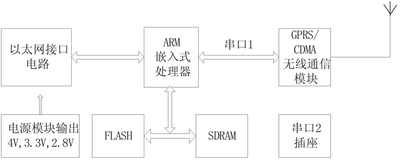
Figure 2 wireless router hardware design block diagram
processor
The embedded processor of the wireless router uses ARM processor S3C4510B, the core is ARM7TDMI, the main frequency is 50MHz, it provides 2 UART serial ports, 1 I2C bus controller, 1 real-time clock and 1 10/100Mbps Ethernet. Controller.
Memory
The FLASH memory is a 1M×16-bit data width HY29LV160, which has a capacity of 16M bits (2M bytes) and an operating voltage of 2.7V~3.6V.
The SDRAM memory is a 16-bit data width HY57V641620 with a capacity of 4 groups × 16M bits (8M bytes) and an operating voltage of 3.3V.
The I2C memory is a single AT24C01 that provides 128 bytes of EEPROM memory for storing a small amount of data that needs to be saved when the system is powered down.
Wireless communication module
The GPRS module Q2406B or CDMA1X module Q2358C produced by Wavecom Company is used. The embedded processor is connected to the wireless communication module through the serial port 1. The module communicates with the cell base station of the public mobile network through the external antenna to send and receive wireless data.
External Interface
The router has three external interfaces: an SMA-seat antenna interface, 50Ω impedance; a RJ45-seat 10M Ethernet port interface to connect various network terminal devices; and a DB9-seat RS232 serial port that can be configured as a console interface. It is used to set parameters and device operation monitoring. It can also be configured as a serial port data conversion interface for converting serial port data into network port data.
power supply
Considering that the car battery voltage is mostly +12V, in order to facilitate the connection of the car's cigarette lighter or car battery, the wireless router power module uses DC power +12 input, output 4V, 2.8V, 3.3V, respectively, to the wireless communication module, S3C4510, Digital circuit parts such as FLASH.
Wireless router software design
Operating system software
mClinux is a project fully compliant with the GNU/GPL (General Public License) convention and fully open code. It is a branch of standard Linux and is now supported by Lineo. It is specifically for CPUs without an MMU and does a lot of miniaturization for embedded systems.
The operating system software of the wireless router uses mClinux, which is an embedded operating system based on the open source code of the Linux kernel. Since the hardware circuit of the wireless router is specially designed for this application, mClinux cannot be directly used, so some of the source code related to the hardware circuit in the mClinux operating system software is re-modified, so that the mClinux operating system can run normally on the wireless router Circuit Board. The main changes made to mClinux are:
· ARMS3C4510B and memory chip initialization procedures;
· The bootloader of the mClinux kernel;
· Configuration files of various network application software of the wireless router;
· For the ARMS3C4510B processor, re-compile the entire operating system by selecting the appropriate compilation tools and parameter options.
Network protocol supported by wireless router
The network protocols supported by the wireless router are shown in Table 1.
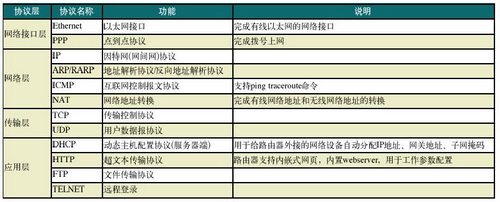
Table 1 Network protocols supported by wireless routers
application
The wireless router's network interface includes a wired Ethernet interface and a wireless dial-up Internet interface. The role of the wireless router is to forward data between the two interfaces and provide a static routing function. The implementation code of the TCP/IP network protocol has been embedded in the mClinux operating system. Static routing can be implemented by setting "IP forwarding" and "IP masquerading" in the kernel. The application software design mainly includes two web applications: PPP application and iptables application.
PPP application
The PPP application is used to dial into the GPRS/CDMA1X mobile network through the wireless communication module, and the login process follows the PPP point-to-point communication protocol. The mClinux operating system code contains a program pppd that implements the PPP protocol, but it is necessary to modify some of the configuration parameters in the pppd source code, such as the dialing number, login user name, and login password, according to the requirements of GPRS/CDMA1X mobile network communication. Get the required PPP application and implement dial-up login to the mobile network.
Iptables application
The iptables package supports data processing package masquerading and filtering. This feature is called a netfilter. In the wireless router we use the "IP Forwarding" and "IP Camouflage" functions.
"IP forwarding" function:
#echo1> /proc/sys/net/ipv4/ipforward
"IP camouflage" function:
#iptables-t nat -A POSTROUTING -o ppp0 -j MASQUERADE
"IP camouflage" works by: when the router dials up, it has two network interfaces, each of which has two IP addresses:
a. The dial-up network interface ppp0 is a dynamic legal public IP address, assuming abcd;
b. The Ethernet interface eth0 is a fixed private IP address, which is assumed to be 192.168.1.1.
If the Ethernet port is connected to a LAN 192.168.1.x, usually the devices in the LAN cannot access the public IP address. The LAN terminal device (assuming its ip address is 192.168.1.22) sets the IP address 192.168.1.1 of the wireless router Ethernet port as the default gateway. When the wireless router receives the request packet from the LAN device to access the public network, it passes the above. The "IP Forwarding" command forwards it, and then rewrites it by the "IP masquerading" command, replacing the source address of the packet with 192.168.1.22 with its legal IP address abcd, and replacing the source port number port1 with one. The new port number is port2 and the process is logged.
When the wireless router receives the response packet of the Internet host, if the destination port number is the previously changed port number port2, the packet is reversely rewritten, and the destination IP address (abcd) and destination port number of the response packet are Port2) is replaced with the IP address 192.168.1.22 and port number port1 of the originally recorded LAN device, and then sent to the LAN device.
Converting a private network address to a public network address is done by a database stored on an iptable-based wireless router. The iptable software of the wireless router maintains this database, so it knows how to perform "reverse conversion", so the data returned from the public network can be correctly sent to the source access device.
Terminal device access to wireless network
The wireless router provides two interfaces to the terminal device, namely an Ethernet interface and a wireless ppp interface. The routing software in the wireless router automatically forwards data from the Ethernet network device of the Ethernet port to the GPRS/CDMA network, or receives data from the GPRS/CDMA network and forwards it to the Ethernet network device of the Ethernet port. This automatic forwarding capability by the wireless router provides the following three functions:
· Data forwarding of network terminal equipment
The network terminal device can access the GPRS/CDMA network by simply connecting to the wireless router through the Ethernet port and setting the default gateway to the IP address of the wireless router. The communication software of the terminal device itself does not need to be changed.
· Plug and play of network terminal equipment
The wireless router has a built-in DHCP server. As long as the terminal device is set to automatically obtain an IP address and connect to the wireless router through the Ethernet port, the network parameters such as dynamic IP address, gateway address, subnet mask, and DNS can be automatically obtained through the DHCP protocol, and then the GPRS/ can be accessed. CDMA network. The communication software of the terminal device itself does not need to be changed, and it is truly plug and play.
·Mobile network adaptation
The built-in software of the wireless router can automatically identify the type of wireless communication module configured by the router hardware, and then use different dialing parameters to log in to the GPRS or CDMA1X mobile network.
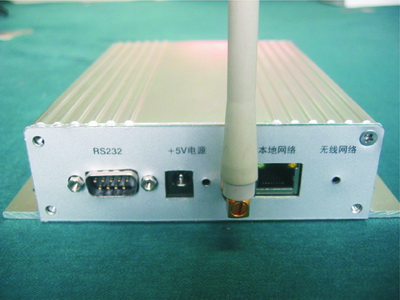
Figure 3 Wireless router device outline drawing
Conclusion
The wired network terminal equipment can utilize the existing GPRS/CDMA1X network, and can complete the network wireless access through the wireless router without laying the network cable. CDMA1X wireless router equipment can be used as an emergency communication means in highway monitoring, flood control command, mountain fire prevention, geological disasters and other occasions. In remote areas, where islands, cars, the Three Gorges cruise ship, trains, etc., where communication lines are difficult or uneconomical, using GPRS/CDMA1X wireless routers to access the Internet or a dedicated VPDN is a quick and inexpensive solution. This equipment has been applied to the Taihu hydrological data monitoring system of the Taihu Basin Management Bureau.
In summary, within the scope of GPRS/CDMA1X cellular coverage, wireless router devices can provide wireless network communication services quickly and economically. The wireless router device implemented by the method provided in this paper has strong versatility and can operate efficiently.
references:
1. James Stanger, Patrick T. Lane, Zhong Rihong, etc., Linux hacker defense open source security guide, Mechanical and Electronic Industry Press, 2002
2.SamsungElectronics,S3C4510BUSER Manual
3.ARMArchitecture Reference Manual, Second Edition, David Seal
4. Edited by Li Shuguang, Detailed Development of ARM Application System (Second Edition), Tsinghua University Press, December 2004
Component Mounting And Soldering.The final step is to mount and solder the components. Both THT and SMT components are placed on the PCB by machines. THT components are most often soldered in an automated process called 'Wave Soldering'. This enables all components to be soldered simultaneously. Their legs are first cut near the board and slightly bent over to keep the component in place. The PCB is then moved over a wave of liquid flux, such that the bottom side strikes the flux. This removes any oxide from the metal surfaces. After heating the PCB it is similarly moved over a wave of melted solder. The solder attaches to the solder pads and component legs, and the soldering is complete.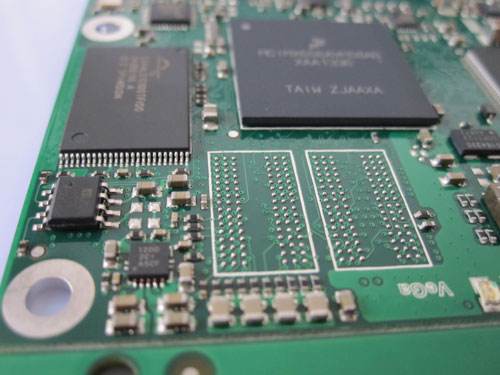
Component Mounting
Component Mounting,Custom Component Mounting,Metal Component Mounting,Mount Bracket Component
Orilind Limited Company , https://www.orilind.com